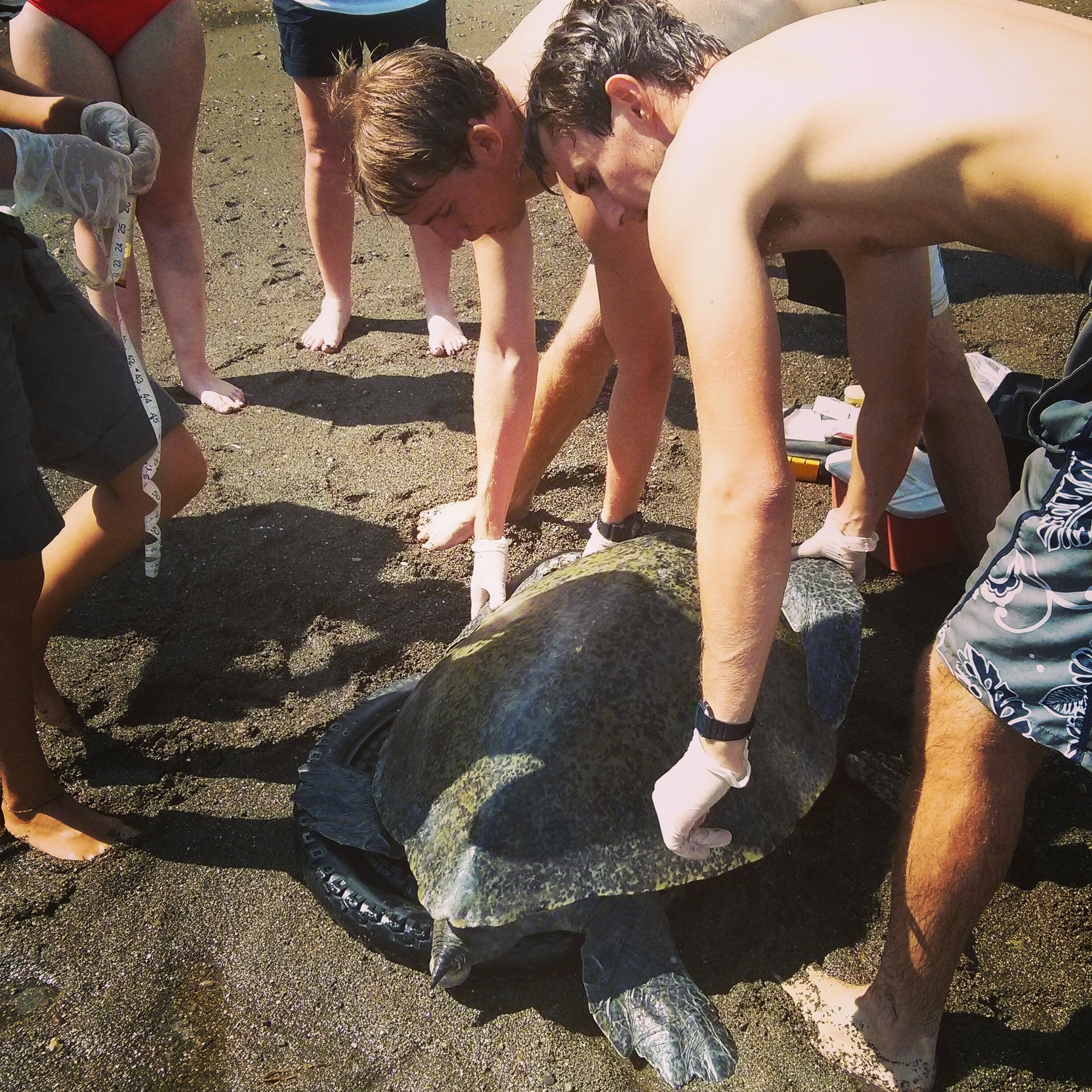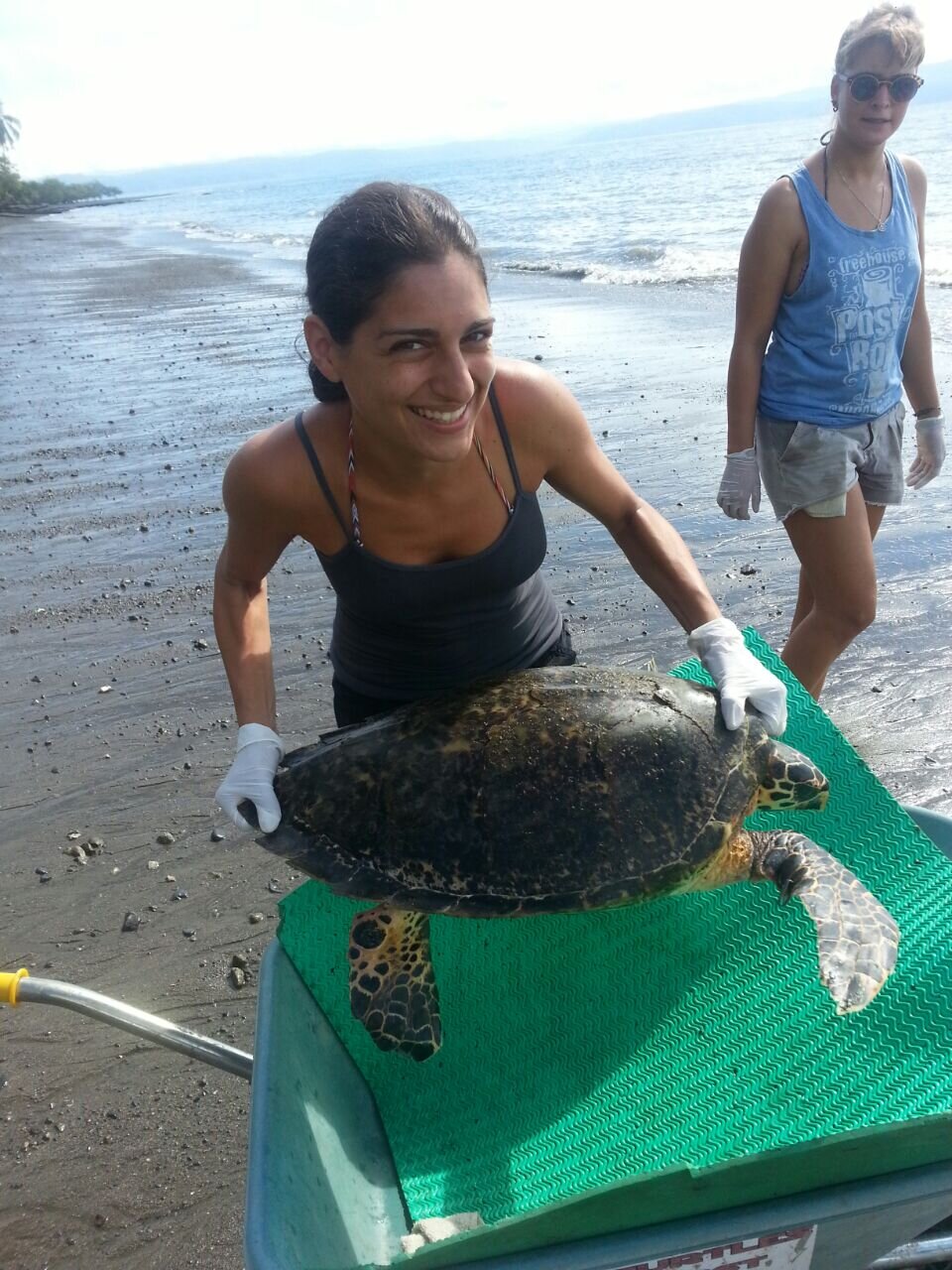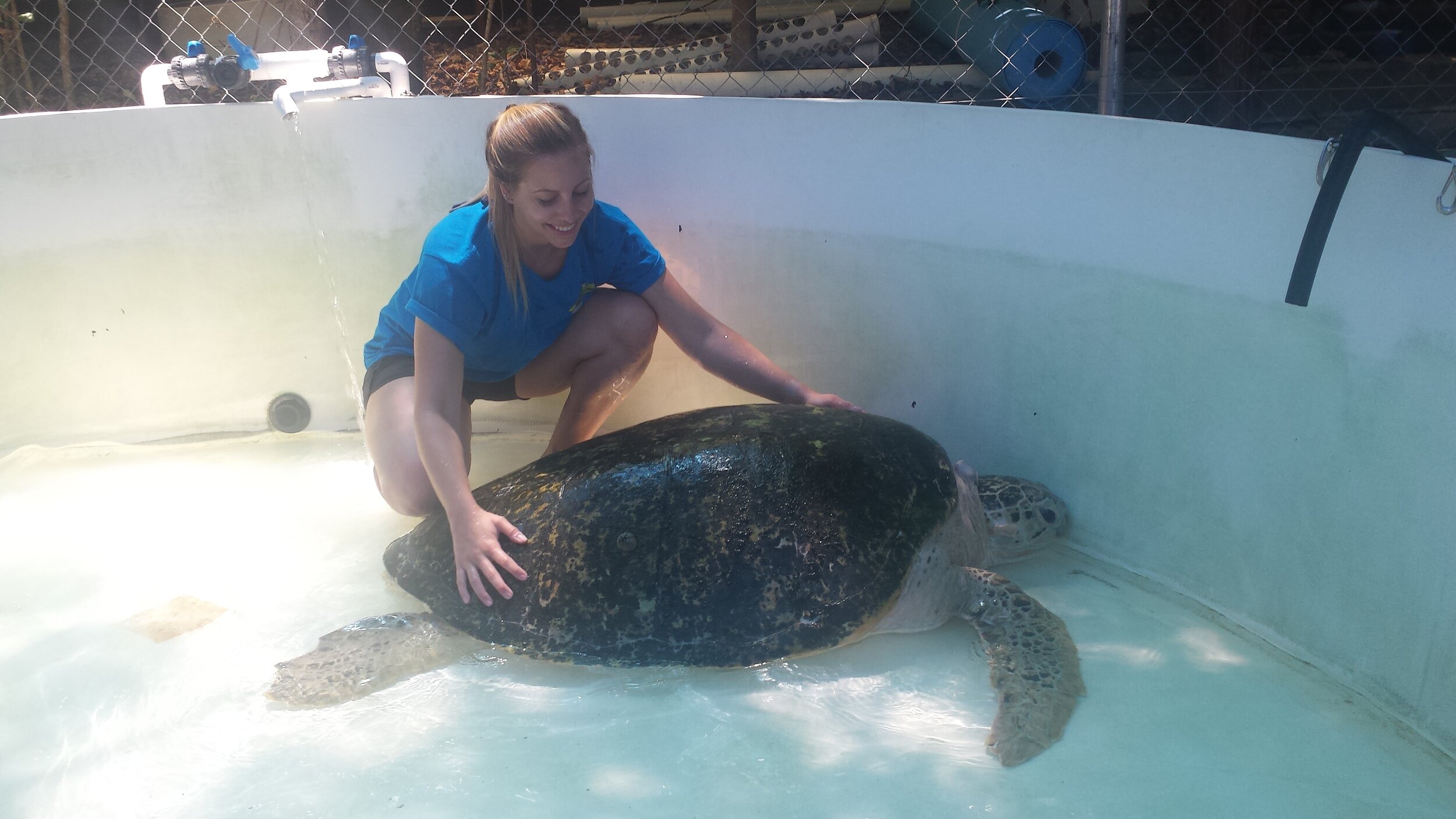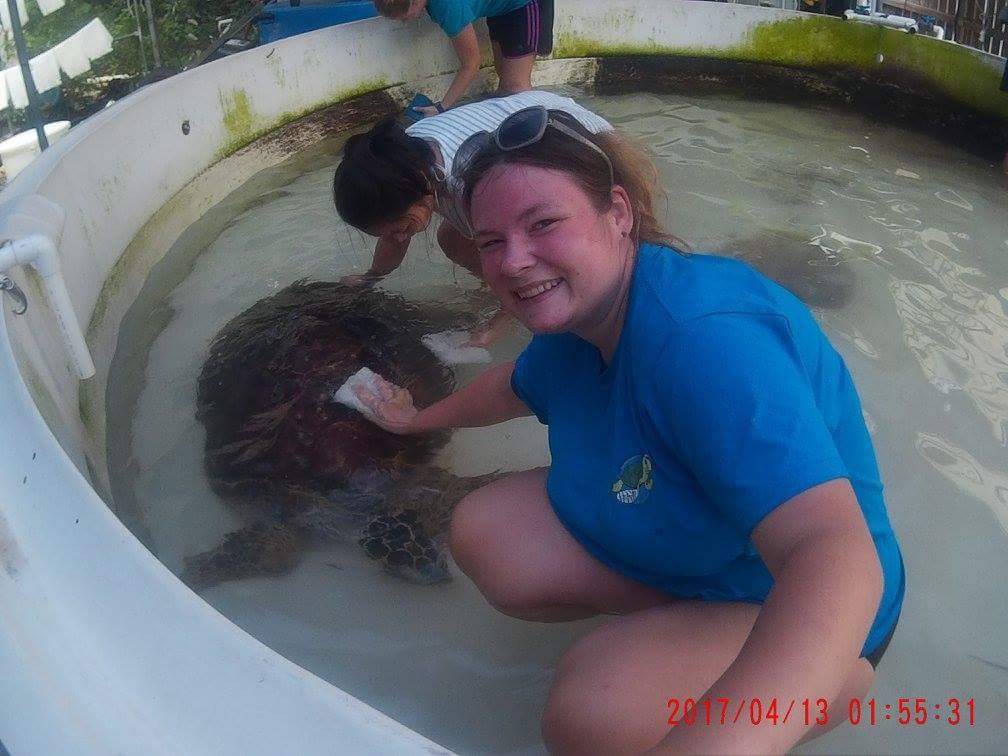The first time I saw a sea turtle was when I was in Costa Rica, participating in AEI’s sea turtle nesting conservation program. It was late at night and we were helping to patrol the beach, on the lookout for female turtles coming out of the ocean to lay their eggs. The turtle was a Leatherback - a giant, silent, magnificent presence in the moonlight. She was breathtaking. And the experience was made even more amazing by knowing we were ensuring her eggs would be kept safe, and that her offspring could return to the ocean one day, to continue a cycle that has been taking place for over 100 million years.
Sea turtles are one of the most loved marine creatures, but also one of the most secretive. For the most part, what sea turtles do and where they spend their time has remained a mystery. There are seven species of sea turtles in our oceans, and while females periodically come on shore to lay their eggs, most of their lives are spent in the water. We do know that most species migrate thousands of kilometers in their lifetimes as they move between their feeding and breeding grounds and are found in every ocean around the world, except the Arctic and Antarctic. One Leatherback turtle found on the Caribbean coast of Costa Rica had been previously tagged in Newfoundland, Canada!
We need to know more about them
Tagging and tracking sea turtles has been key in allowing researchers to gain insight into their lives, and provides important information for sea turtle protection and conservation. AEI’s sea turtle conservation program in Costa Rica offers a glimpse into the lives of sea turtles when they are not at their nesting sites. Researchers study turtles swimming freely in the Golfo Dulce, identifying, tagging and monitoring these sea turtles to better understand their behaviour. This information is used in the global turtle conservation effort to help turtles around the world.
Sea turtle facts
Sea turtles species vary greatly in size. Olive ridleys are the smallest sea turtles (weighing up to 50 kg or 110 pounds). Leatherbacks are the largest sea turtle species and can weigh up to 680 kg (1,500 pounds) and measure 183 cm (6 feet). We know that sea turtles can live a very long time, but their exact age is difficult to document. Their natural lifespan is estimated to be between 50 and 100 years. It takes 20 - 30 years for a sea turtle to reach sexual maturity, and when ready, female turtles return to the very same beach where they were hatched to lay their own eggs. Some females have been found to nest every year until the age of 80!
How many sea turtles are there?
This is a difficult question to answer, as juvenile and male sea turtles never come ashore. Population numbers are usually estimated by the number of adult females that nest each year. This is not an easy feat, as some females nest every 2 - 3 years, and others may nest more than once in a season. Scientists look at the changing numbers of nesting females from year to year to determine population trends.
Making a difference
We do know that six of the seven species of sea turtles are listed as threatened, endangered or critically endangered. Sea turtles face multiple threats caused by humans, such as bycatch in commercial fishing gear, illegal trade, consumption, and climate change. There is still much work to do to decrease these threats and many ways for you to help. AEI’s partner in Australia provides assistance to adult sea turtles that have been injured or impacted by boats, nets, ocean pollution and severe weather events.
Together we are making a difference. We are starting to hear positive news, with many conservation programs reporting an increase in the numbers of nesting female sea turtles now being counted on the beaches. By supporting these efforts, we can continue to see the numbers of these ancient and mysterious sea creatures rise and ensure they have a place in the oceans for millions of more years to come.
Remember that AEI has a Relief Fund for our placement partners. If you want to donate to sea turtles you can send us the donation through paypal and we will send it over to them- just make sure you add the animal you want the donation to go to. That way you don’t pay any bank fees or anything like that! 100% of the money that you send us to send to sea turtle conservation will go to sea turtles! Donate Here!











